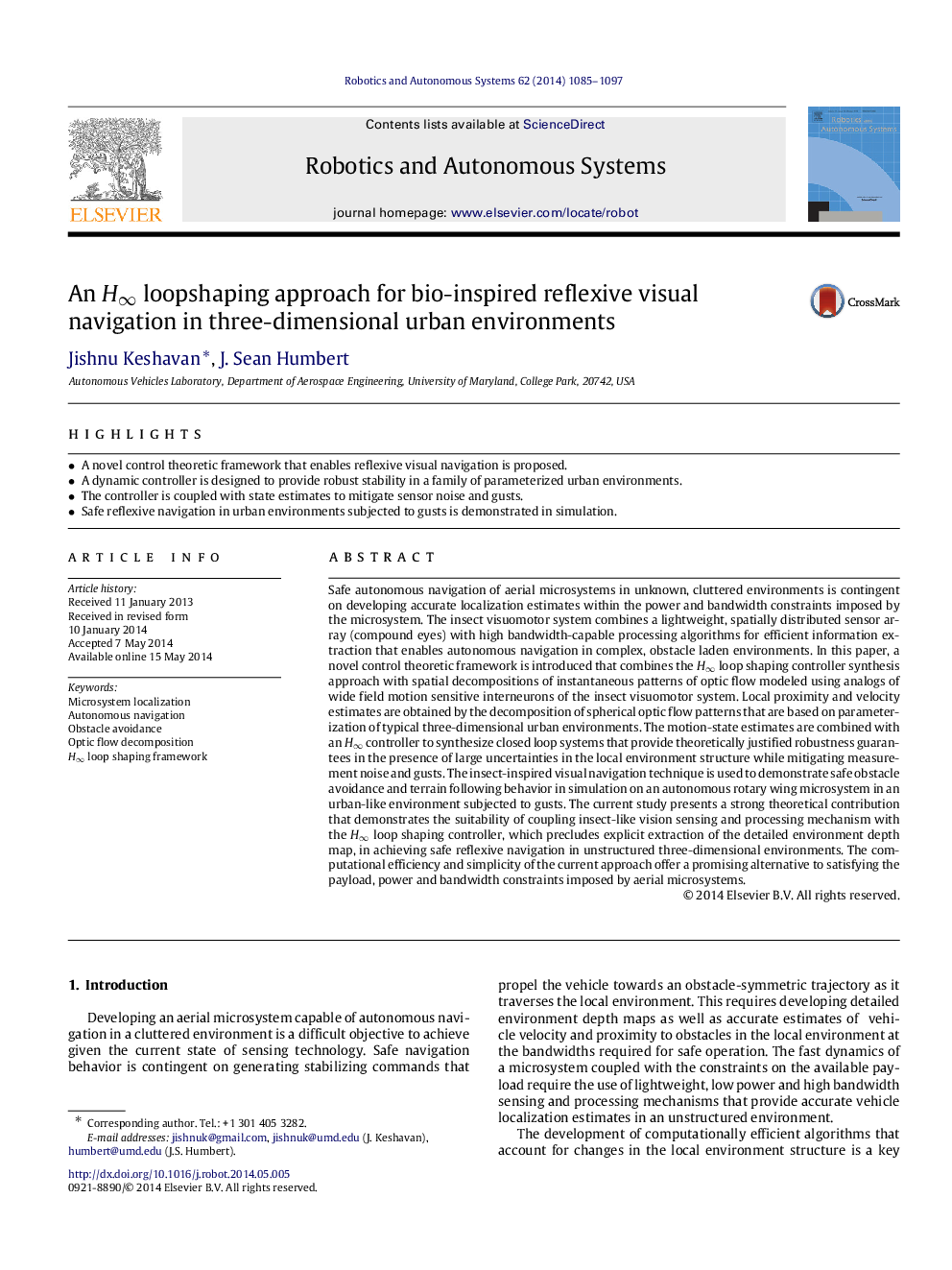| Article ID | Journal | Published Year | Pages | File Type |
|---|---|---|---|---|
| 411688 | Robotics and Autonomous Systems | 2014 | 13 Pages |
•A novel control theoretic framework that enables reflexive visual navigation is proposed.•A dynamic controller is designed to provide robust stability in a family of parameterized urban environments.•The controller is coupled with state estimates to mitigate sensor noise and gusts.•Safe reflexive navigation in urban environments subjected to gusts is demonstrated in simulation.
Safe autonomous navigation of aerial microsystems in unknown, cluttered environments is contingent on developing accurate localization estimates within the power and bandwidth constraints imposed by the microsystem. The insect visuomotor system combines a lightweight, spatially distributed sensor array (compound eyes) with high bandwidth-capable processing algorithms for efficient information extraction that enables autonomous navigation in complex, obstacle laden environments. In this paper, a novel control theoretic framework is introduced that combines the H∞H∞ loop shaping controller synthesis approach with spatial decompositions of instantaneous patterns of optic flow modeled using analogs of wide field motion sensitive interneurons of the insect visuomotor system. Local proximity and velocity estimates are obtained by the decomposition of spherical optic flow patterns that are based on parameterization of typical three-dimensional urban environments. The motion-state estimates are combined with an H∞H∞ controller to synthesize closed loop systems that provide theoretically justified robustness guarantees in the presence of large uncertainties in the local environment structure while mitigating measurement noise and gusts. The insect-inspired visual navigation technique is used to demonstrate safe obstacle avoidance and terrain following behavior in simulation on an autonomous rotary wing microsystem in an urban-like environment subjected to gusts. The current study presents a strong theoretical contribution that demonstrates the suitability of coupling insect-like vision sensing and processing mechanism with the H∞H∞ loop shaping controller, which precludes explicit extraction of the detailed environment depth map, in achieving safe reflexive navigation in unstructured three-dimensional environments. The computational efficiency and simplicity of the current approach offer a promising alternative to satisfying the payload, power and bandwidth constraints imposed by aerial microsystems.
